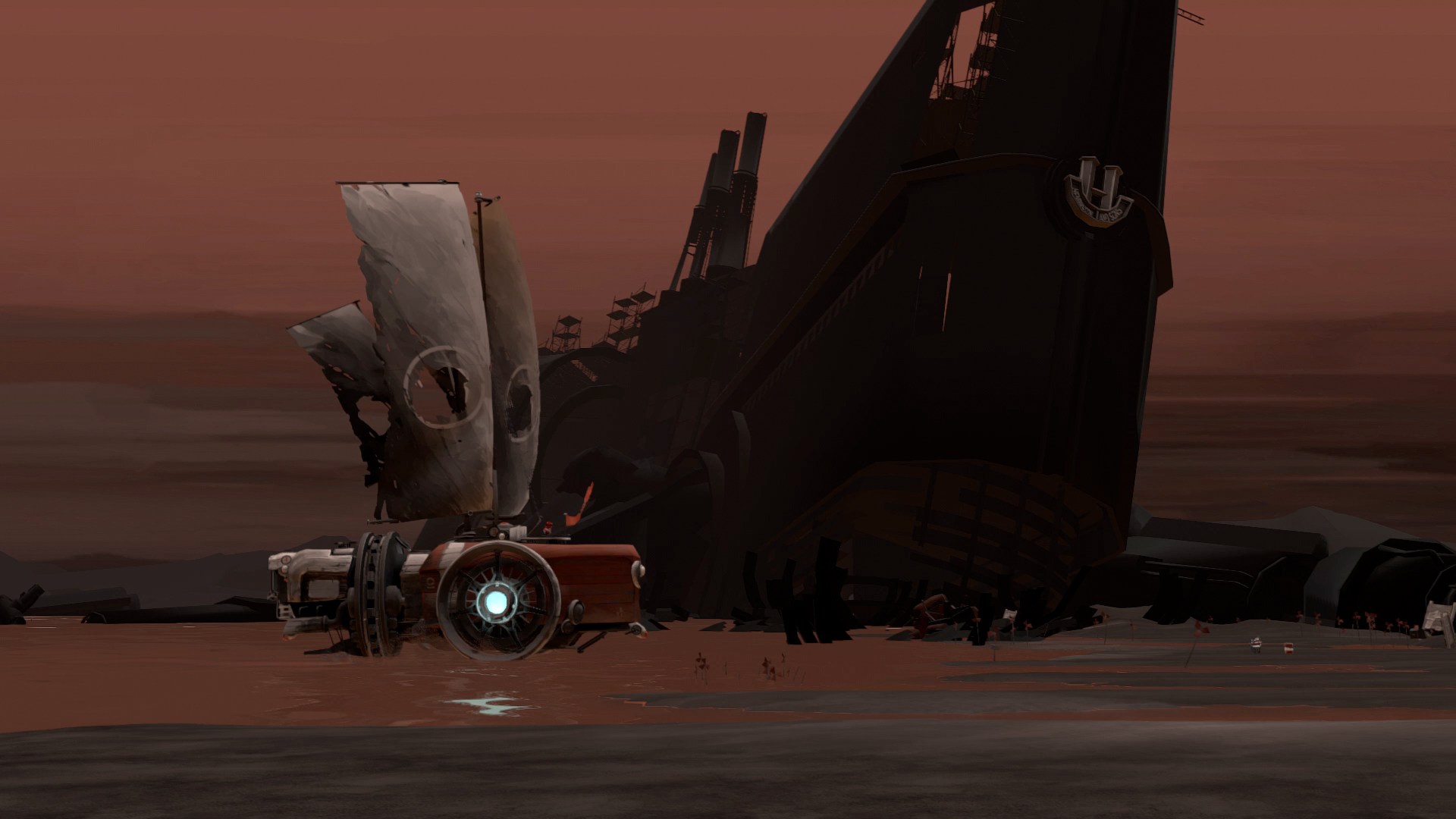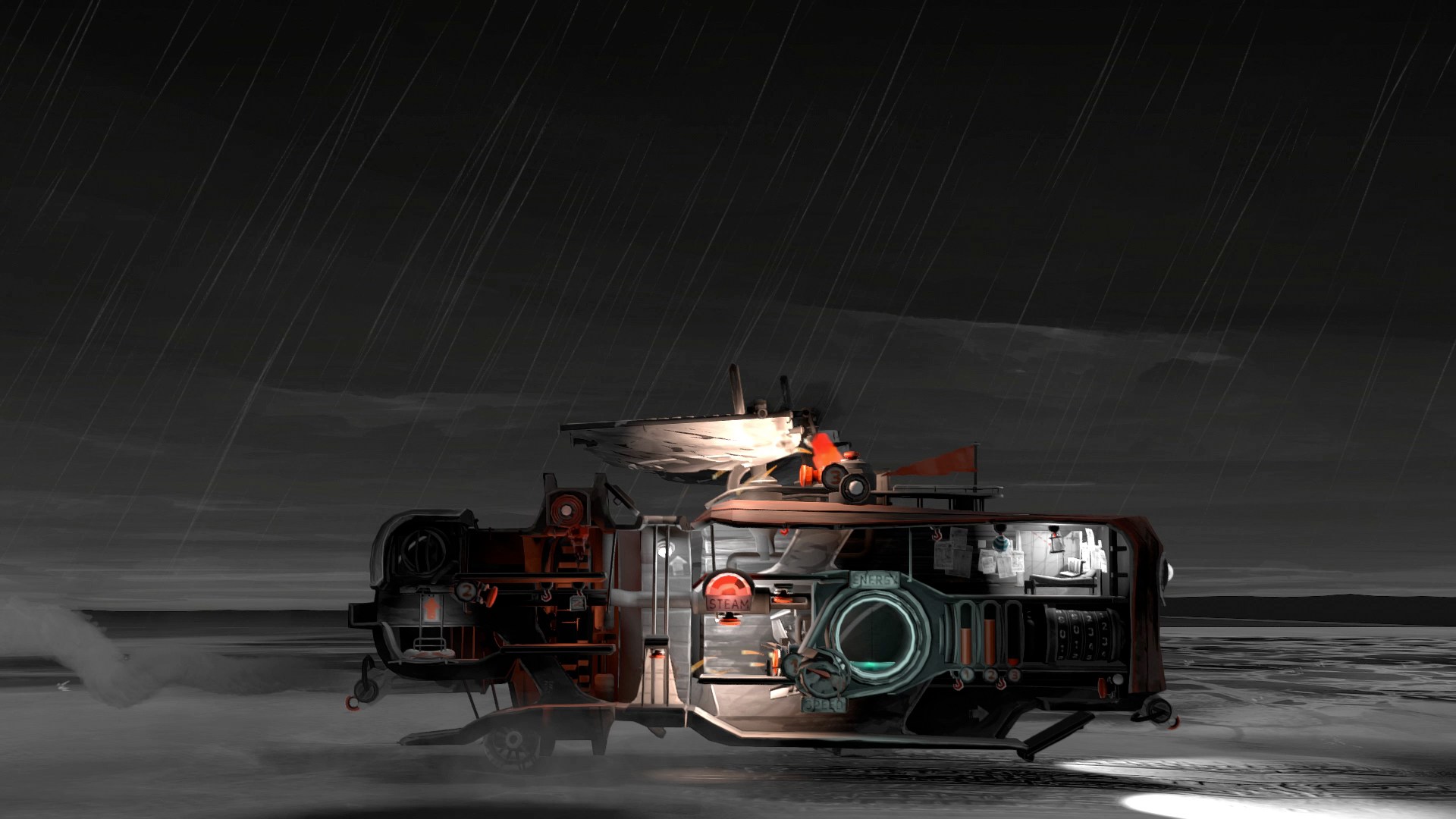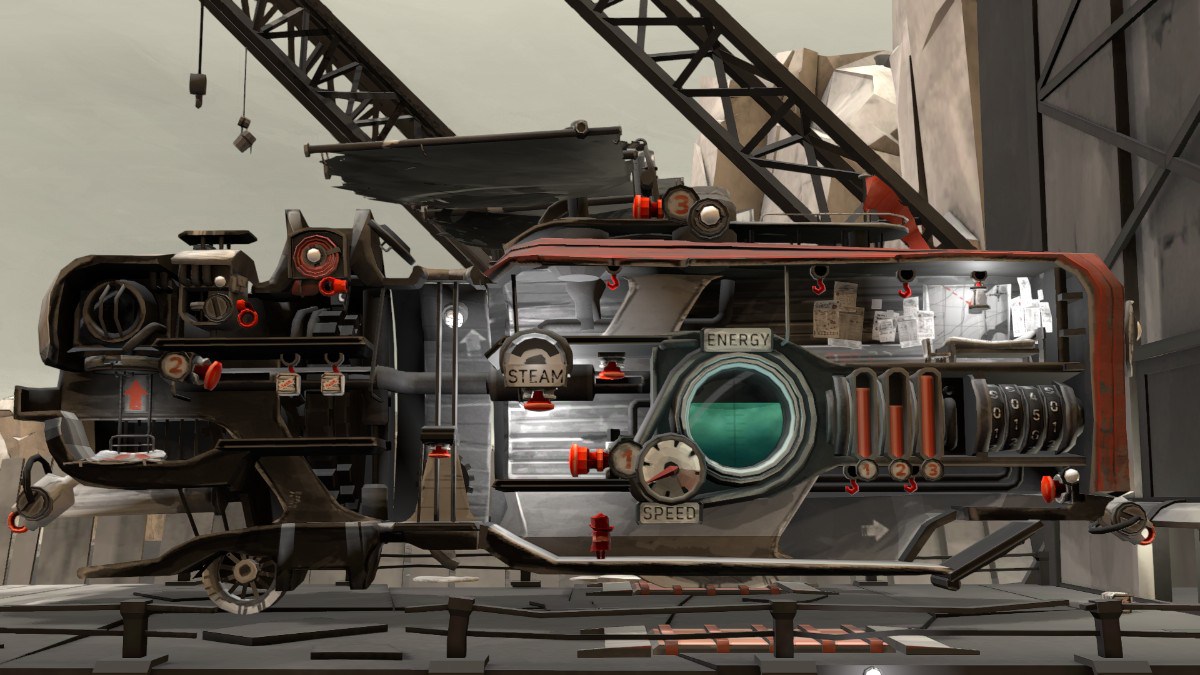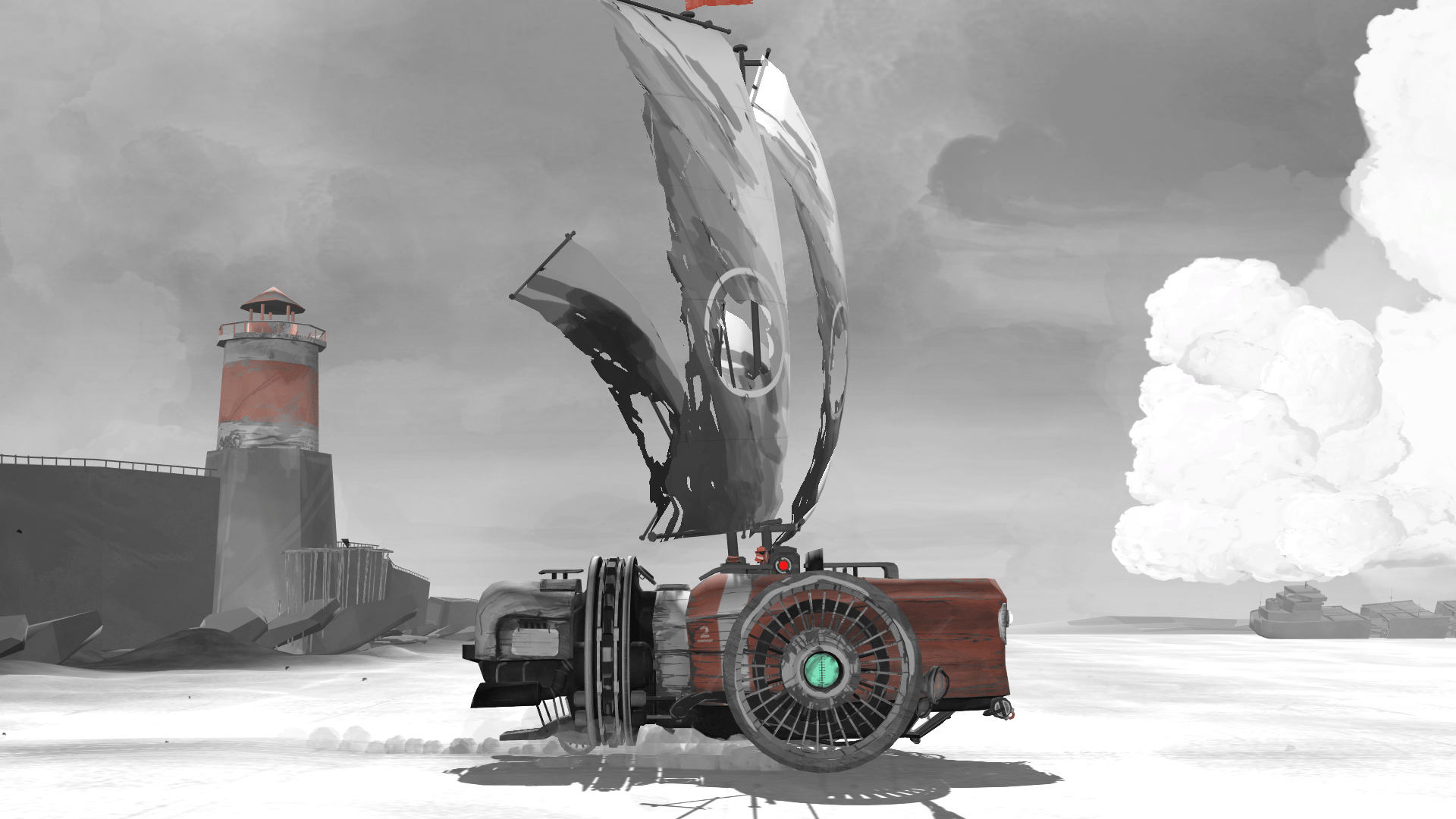Everything you know has come and gone. You are all alone now. The last person alive in a broken world. Your only hope is a train-like vehicle. It has seen better days. There’s not much holding it together. Worse still, you don’t know where you’re going or even have an inkling of what you’re going to find out there. All you know is that the engine needs to be fueled. And you’re the one to do it. There will be time to reflect and think about your place in the world. But for now, all you want to do… is to keep moving forward.

Platform Reviewed: PC
Platforms Available: PC, Xbox One, PS4
Developer: Okomotive
Publisher: Mixtivision
Release Date: May 17, 2018, TBA: PS4, Xbox One
MSRP: $34.99
This review is based on a review code provided by Mixtivision.
Overview:
FAR: Lone Sails is a 2D vehicle adventure game. The player needs to maintain and upgrade their vehicle in order to make the trek across the dried-out seabed and beyond. The journey will require a lot of fuel, so keep an eye out for anything you can burn in order to keep the engine running.
Gameplay and Features:
For the most part, it is your task to maintain and fuel your vehicle. You need it to punch through all the obstacles in the game through places you can’t go on foot. Fuel comes in the form of objects that litter the ground. Be it boxes or tires, you can use pretty much anything as fuel for your vehicle. Of course, some are more effective than others like fuel barrels. Knowing when to use them is the difference between a smooth ride or constantly getting off to look for more fuel. There are hooks in your vehicle that you can use in order to get around more freely. You can use them to hang your more valuable sources of fuel. But really, anything can be hung from there, including toys and lanterns. Objects put on to hooks do not impede you, but objects on the ground will.
Maintenance plays a big part in the game. You will see yourself frequently releasing steam as it builds up. Parts become damaged over time, and fires break out whenever you hit something solid. Thankfully, you have access to a fire hose from the get to and you stumble upon the welding torch at some point in the game. If you neglect to maintain your vessel, it is going to explode. The game picks up after your last checkpoint as you wake up from your bed.
Another factor in the success of your journey is the upgrades you find for your vehicle. These will range from truly essential ones like the sails to the very situational ones like the vacuum that allows you collect scrap without having to stop. The sails allow you to continue moving without having to burn fuel, provided there is enough wind to push the vehicle. They will get damaged if they hit a low ceiling, so you have to watch out for that.
Every once and a while, your vehicle will get stuck in an area it cannot cross. This is when you have to get off and look for a way to clear the path. Usually, these structures contain a puzzle that you will have to solve in order to proceed. It breaks the monotony of being constantly on the road. They may also contain some goodies upon closer inspection.

The Good and the Bad:
The best way to experience the game is through its atmosphere. Sometimes, the best to do is just to listen to the music playing in the background as you sail through the wide expanse. Music plays a huge part in the game. The pace picks up whenever you overcome an obstacle or when the weather changes. And softens whenever you are in cruise control.
The controls are simple and intuitive. You can press a button to pick up and drop objects. Pushing your body against or jumping on interactibles in the world activates them. There is no GUI cluttering your view. All the information you’re ever going to need is on the vehicle itself. A red light comes on whenever something needs to be repaired or if a fire ignites. Because of the limited actions, you have to work with, there’s no need to overthink many of the challenges. Overcoming them is still a great feeling but the step to get to the solution never seems convoluted.
The best moments I’ve had in the game is finding all sorts of random stuff on the ground. The flower I saw in one of the buildings I could have left behind or fed to the engine. But instead, I keep it in my bedroom as a sort of companion. Along with some other things I can’t seem to find anywhere else. I love that the game allows you to do that. I can fill the vehicle with all sorts of knick-knacks and no matter how awkward it gets, it’s how I’d like to play the game. It’s not the most efficient way of doing things, but I figured, “why not?”
There is no story being told per say. You can only make assumptions by looking at the background and seeing what kind of world it was before the Apocalypse. The civilization that built all these marvels had to have been great at one point. And the fall from grace was hard. Still, going through the remains of a superstructure puts everything into perspective. I think it’s one of the best ways to tell a story without saying a single word.
I can’t say that this game is bad because it is short. The focus of the game is laser-like and any attempt to extend game time, in my opinion, would cause harm to the game and the message that it’s trying to convey. Think of it as reading a thought-provoking short story. Not everything requires 30+ hours of gameplay to make the most of it.

Final Verdict:
FAR: Lone Sails is one of the best Indie games to come out in recent memory. The gameplay is simple and effective. Everything you need to know about the character and the world is presented to you in the first 5 minutes of the game. The idea of a completely vast world with no one to interact with may be depressing to some people, but we have to accept this solitude in order complete the journey. If anything, your vehicle is your companion. Without it, you are truly without hope. I suggest not focusing on the destination but on the journey itself. I recommend this game to anyone wanting to try something new and unique. This is one tale that’s going to stay with you for a while.







